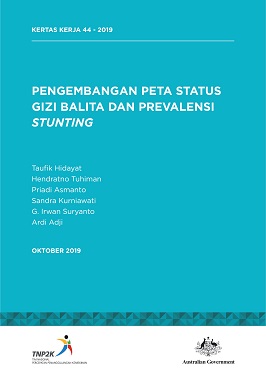The Development of Nutmap (Nutrition Map) Status and Stunting Prevelance in Children Under-Five
Indonesia still faces major challenges with chronic undernutrition among children under-five, which is evidenced by the high prevalence of stunting in children under-five. In order to measure the effectiveness and strengthen the targeting of stunting prevention efforts, the government needs information on the level and distribution of the prevalence of stunting in children under-five at the lower administrative level than the regency/municipality. This activity aims to provide information on the nutritional status of children underfive, including stunting prevalence, up to the village/ward level. The methodology selected to produce the Nutritional Status Map for children under-five was adopted from the Small Area Estimation (SAE) approach developed by Elbers et al. (2003). The estimation model of the nutritional status indicator was determined for each indicator: stunting, wasting, and underweight. The estimation model for each indicator used reference number of the nutritional status prevalence for z-scores of -2 and -3 at the regency/municipality level. In the initial stage, the development of this map was focused on five districts that are included in the 100 priority districts/cities for stunting prevention. Although the coverage area of this map is still limited to five districts, this nutritional status map is expected to be developed comprehensively, starting from priority districts for handling stunting to covering all districts/cities. It is expected that development of the nutritional status map and quantifying stunting prevalence will contribute to improving the system for targeting priority policies to reduce stunting.
